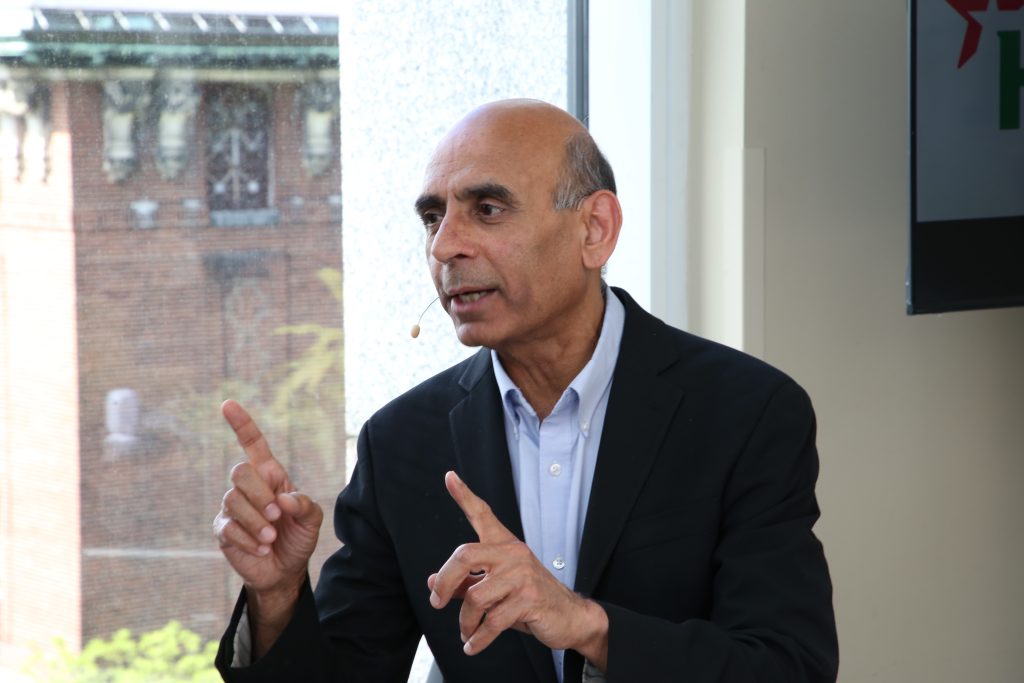While much of the tech world chases scale and speed, IBM Corp. has leaned into something far more enduring: enterprise integration across hybrid environments.
Built on decades of mainframe reliability and deep enterprise experience, IBM’s foundation sets it apart. That legacy gives the company a unique position in today’s cloud-native landscape, according to Sanjeev Mohan (pictured), principal analyst at SanjMo.

SanjMo’s Sanjeev Mohan talks with theCUBE about IBM’s evolving strategy and data platform aspirations.
“Seventy percent of the world’s transactions actually go through an IBM mainframe,” Mohan said. “Everything that they have in the rest of the stack is differentiated.”
Mohan spoke with theCUBE Research’s Dave Vellante at IBM Think, during an exclusive broadcast on theCUBE, SiliconANGLE Media’s livestreaming studio. They discussed IBM’s evolving strategy across mainframes, software integration and the company’s data platform ambitions. (* Disclosure below.)
How IBM’s enterprise integration strategy could shape the next data stack
IBM isn’t competing with hyperscalers on compute margins or cloud volume, according to Mohan. Instead, the company is doubling down on hybrid infrastructure and taking a vertically integrated approach across its Red Hat Inc. software and consulting assets.
“They are driving this application story now with AI agents, with IBM Consulting,” he said. “They’re coming from the top down, [with] data being spread across hybrid and cloud and on mainframe gives them the differentiation.”
IBM’s recent acquisition of DataStax, Inc. may have surprised some industry watchers, but it’s a calculated play, Mohan explained. The deal isn’t about Cassandra, the open-source database behind it, but rather about unlocking value from emerging generative AI tools that IBM can layer into its evolving data stack.
“My point is that the reason for buying DataStax is not Cassandra,” he said. “Cassandra’s open source. If they bought it for Cassandra, that would not be a very smart move because everyone can get to Cassandra,” Mohan said. “They bought it for Langflow … the business developer–friendly way to build your generative AI applications.”
This approach supports IBM’s broader enterprise integration push to reframe the data stack conversation. Instead of focusing on siloed features, IBM wants to become the enterprise integration layer that connects governance, artificial intelligence and infrastructure — a Swiss-style player not beholden to any single hyperscaler, Mohan noted.
“Although there are a lot of new products … I think with watsonx.data, watsonx.governance [and] watsonx.ai, they’ve got the three pillars,” he added. “They’ve got data, AI and governance. Watsonx Orchestrate is the layer they’re putting on top to orchestrate different pieces and help business users develop AI pieces.”
This strategy depends on differentiation through cohesion, not scale, according to Mohan. And if IBM can maintain that edge, pairing its open stack with tight integration and an enterprise-first posture, it could carve out a sustainable position even as consolidation reshapes the market.
“To find a moat, you have to find something that nobody else is doing or even can do,” he said. “And nobody can do mainframe, nobody can do what Red Hat OpenShift does. With HashiCorp, Turbonomic, Apptio and Instana and all of those things, I think IBM is in a very unique position that none of these other players we talked about can match.”
Here’s the complete video interview, part of SiliconANGLE’s and theCUBE’s coverage of IBM Think:
(* Disclosure: TheCUBE is a paid media partner for IBM Think. Neither IBM Corp., the sponsor of theCUBE’s event coverage, nor other sponsors have editorial control over content on theCUBE or SiliconANGLE.)
Photo: SiliconANGLE
Your vote of support is important to us and it helps us keep the content FREE.
One click below supports our mission to provide free, deep, and relevant content.
Join our community on YouTube
Join the community that includes more than 15,000 #CubeAlumni experts, including Amazon.com CEO Andy Jassy, Dell Technologies founder and CEO Michael Dell, Intel CEO Pat Gelsinger, and many more luminaries and experts.
THANK YOU

